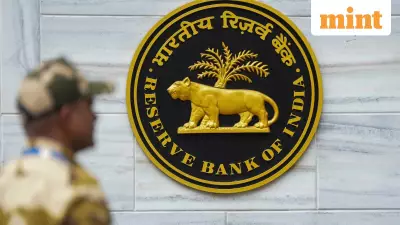
The Reserve Bank of India (RBI) has decisively closed a significant regulatory gap in the gold loan sector, explicitly prohibiting banks and non-banking financial companies (NBFCs) from lending against gold jewellery that has been repledged by informal lenders. This move directly targets a practice where formal lenders provided funds to pawnbrokers against gold collateral that these brokers had initially obtained from their own customers.
The End of the Repledging Practice
According to four bankers familiar with the development, the central bank's revised framework, issued in June 2025, now clearly states that repledging of gold is not permitted. Consequently, lenders who had extended such loans will be unable to renew them once the new norms take full effect. These bankers, who spoke on condition of anonymity, confirmed that this practice was not isolated to a single institution but was prevalent among several lenders. They noted, however, that quantifying the exact size of loans against repledged gold is challenging, as a substantial portion operates within the unorganized sector.
The RBI's official directive is unequivocal: "A lender shall not avail loans by re-pledging gold or silver pledged to it by its borrowers, or extend loans to other lenders, entities or individuals by accepting gold or silver collateral pledged to such lenders, entities, or individuals by their borrowers as collateral." This forms part of the comprehensive framework for loans against gold jewellery, which is scheduled for implementation starting 1 April 2026.
Federal Bank's Portfolio in Focus
The issue gained prominence after private sector lender Federal Bank made a disclosure during its earnings call for the second quarter of fiscal year 2026. On 18 October, the bank's Managing Director and CEO, K.V.S. Manian, highlighted a specific segment within its gold loan portfolio—wholesale or business gold loans—that would be affected by the new RBI guidelines. He stated that this "Digi-biz" wholesale portfolio would need to be wound down, with the bank shifting its focus to growing its retail gold loan book.
As of 30 September, Federal Bank's total gold loans had grown approximately 9% year-on-year to ₹32,323 crore, constituting 13.2% of its overall loan book. A bank spokesperson later clarified that this specific wholesale segment was only a minor share of the total gold loan portfolio and that the bank is proactively managing its run-down well ahead of the regulatory deadline to mitigate any future balance sheet impact post-FY26.
The Mechanics and Rationale Behind the Ban
Bankers and analysts explain that the now-banned practice involved banks providing loans to intermediaries, such as local moneylenders or pawnbrokers. These intermediaries would first lend to their own customers at significantly higher interest rates, often in rural and semi-urban markets. They would then pool the gold jewellery received as collateral and seek refinancing from banks or NBFCs at lower rates.
While banks typically charge between 8.25% and 17% for gold loans, the unorganized sector often imposes usurious rates as high as 34-36%. The RBI's primary discomfort stems from this exploitative pricing. Although the central bank cannot directly regulate informal moneylenders, its new norms effectively cut off their access to cheaper institutional refinancing. The new rules mandate that regulated entities can only lend to the "rightful owner of the eligible collateral", ensuring that the ultimate borrower deals directly with the bank or NBFC.
This regulatory action follows an earlier warning from the RBI in September 2024, where it flagged "irregular practices" in gold loan disbursals, including the use of third parties for sourcing and appraisal, and valuation of gold without the customer's presence. The tightening of norms is a direct response to these observed risks.
The broader context for this regulatory scrutiny is a massive surge in gold lending, driven by soaring gold prices. Bank gold loans have more than doubled in a year, standing at a substantial ₹3.2 trillion as of September-end, even as personal loans and credit cards become scarcer. The RBI's move aims to bring greater transparency and consumer protection to this rapidly expanding segment of the credit market.





